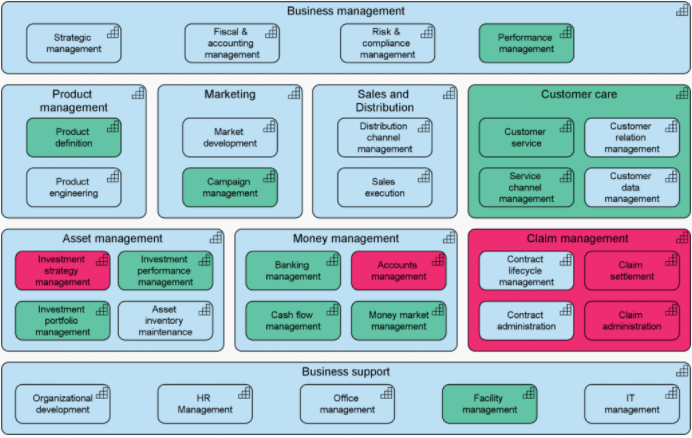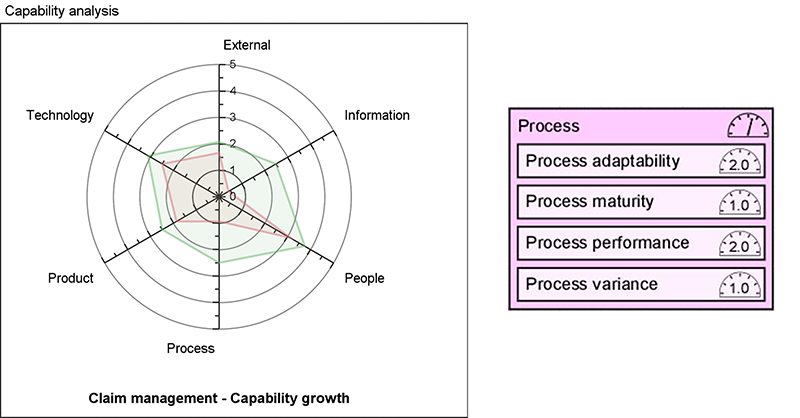In our previous blog, we briefly outlined the two strategic options that our example insurance company ArchiSurance is exploring. By analyzing the operational excellence strategy, they have benchmarked their efficiency against the industry average: average capabilities are shown in blue, above-average capabilities in green and below-average capabilities in red (Figure 1).
The capabilities which are shown in red is where ArchiSurance expects to find room for improvement in the context of the operational excellence strategy.

The example below shows how you can use spider charts to visualize your capability analysis in more detail. Each chart shows the current and desired performance of a capability along different axes. The example on this page shows this notion of incremental development of a capability. For the “Claim management” capability, six dimensions are defined. The baseline analysis for this capability results in values for the different dimensions, which are linked using the red line. The required maturity, broken down into values for the individual dimensions, is indicated with the green line.

Figure 2. Capability Analysis.
For the different dimensions for the capability analysis, we have defined a Metric concept as a specialization of Driver, using the language customization mechanism of ArchiMate 3.0. Metrics can be composite, as shown in the figure: the process dimension of the capability analysis consists of a weighted average of process adaptability, maturity, performance, and variance. Of course, you will want to define metrics in such a way that they support the strategic direction of the organization.
In Enterprise Studio, you can easily define such metrics. These can be based on externally imported data and also on analyses of your models. For example, you can trace the importance of applications for your strategy via the processes they support, which contribute to the capabilities needed to deliver the envisaged business outcomes.
In a more general sense, capabilities prove to be a good starting point for capital allocation aligned with your organization’s strategy. Capability analyses may help you draw up investment plans, for example to allocate more budget to those capabilities that need a substantial improvement in one or more dimensions. They provide a coherent part of the business that address specific outcomes. The portfolio management functionality of Enterprise Studio is ideally suited to support such decision making.
The next step in ArchiSurance’s strategy implementation is the realization of these desired capabilities and capability levels. Moreover, ArchiSurance needs new capabilities for its ‘Digital Customer Intimacy’ strategy. We will address this in our next blog. We will also go into the differences between capabilities and business functions, an often discussed subject.
Next blog post: ArchiMate® 3.0 – Capability Realization